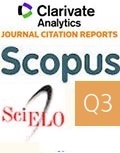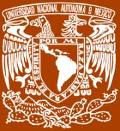|
Boletín de la Sociedad Geológica Mexicana Volumen 76, núm. 2, A090424, 2024 http://dx.doi.org/10.18268/BSGM2024v76n2a090424
|
 |
Análisis de residuos orgánicos en botijas coloniales recuperadas durante las excavaciones del Proyecto Templo Mayor en el Centro Histórico de la Ciudad de México
Analysis of organic residues in colonial jars recovered during the excavations of the Templo Mayor Project in the Historic Downtown of Mexico City
Alessandra Pecci1,*, Simona Mileto1, Mirsa Islas Orozco2, Leonardo López Luján2
1 Equip de Recerca Arqueològica i Arqueomètrica (ERAAUB), Facultat de Geografia i Història, Universitat de Barcelona. Carrer Montalegre 6, C.P. 08001 Barcelona, España.
2 Proyecto Templo Mayor, Instituto Nacional de Antropología e Historia. Seminario Núm. 8, Centro Histórico, C.P. 06060, Ciudad de México, México.
* Autor para correspondencia: (A. Pecci) This email address is being protected from spambots. You need JavaScript enabled to view it.
Cómo citar este artículo:
Pecci, A., Mileto, S., Islas Orozco, M., López Luján, L. 2024, Análisis de residuos orgánicos en botijas coloniales recuperadas durante las excavaciones del Proyecto Templo Mayor en el Centro Histórico de la Ciudad de México: Boletín de la Sociedad Geológica Mexicana, 76 (2), A090424. http://dx.doi.org/10.18268/BSGM2024v76n2a090424
Manuscrito recibido: 25 de Octubre de 2023; manuscrito corregido: 25 de Marzo de 2024; manuscrito aceptado: 9 de Abril de 2024.
ABSTRACT
This research is based on the interest in defining the content of Spanish amphorae used for centuries as containers for agricultural products that were exported from Spain to its American colonies. To do this, we have analyzed a series of fragments of botijas that were found in the colonial stratigraphic levels of the Historic Downtown area of Mexico City. These are 10 samples recovered within the framework of the archaeological excavations of the Templo Mayor Project of the National Institute of Anthropology and History. The results obtained have allowed us to establish that the content of these botijas was not always the same. We identified the presence, often combined, of plant origin products (probably mainly oils and wines), although in certain cases there were also products of animal origin. At the moment, we have not been able to define what the preferred content of each of these containers was and what the sequence was in the bottled products. However, we were able to confirm that it is possible to analyze glazed pottery, obtaining from them key information that will allow us to define the use of most of the vessels from the New Spain colonial period.
Keywords: amphorae, botijas, analysis of organic waste, wine, oil, Mexico City, colonial period, sacred site of Tenochtitlan.

